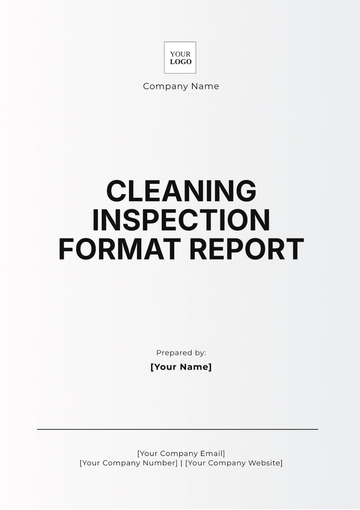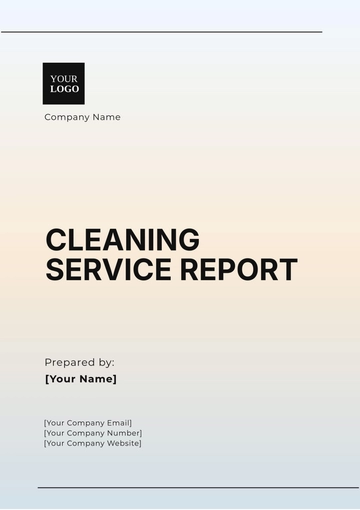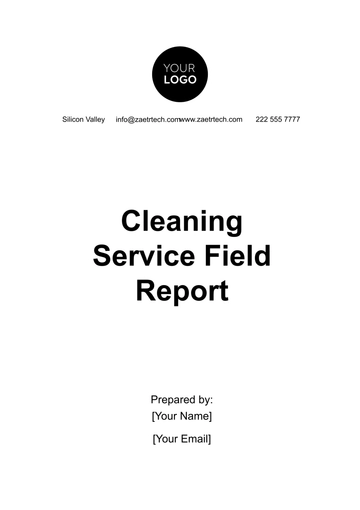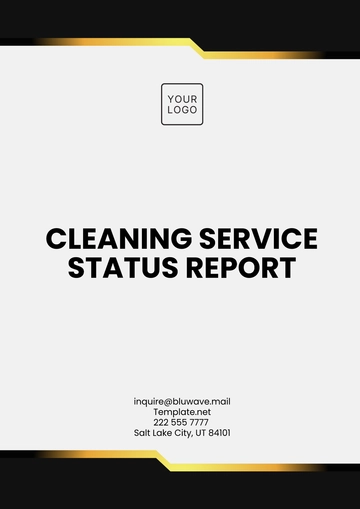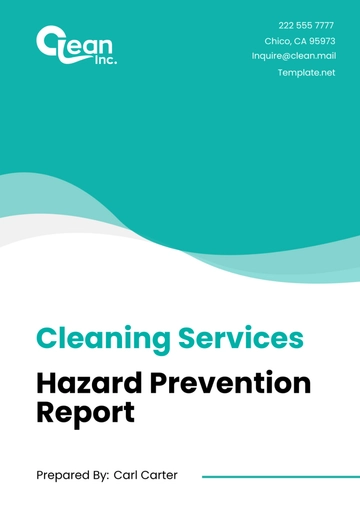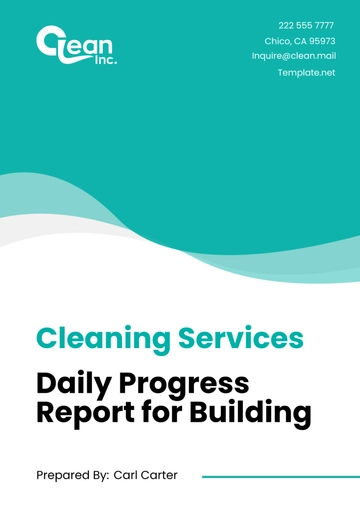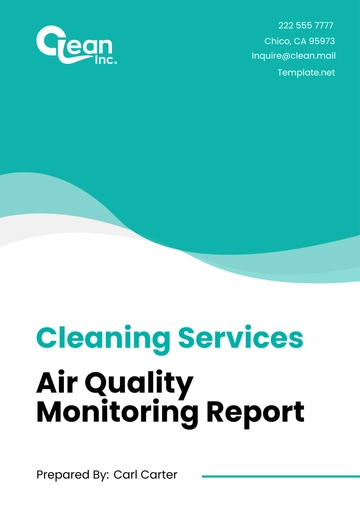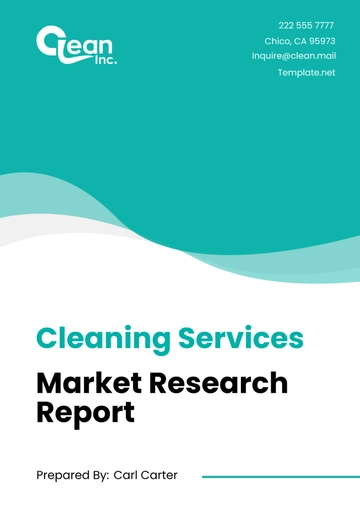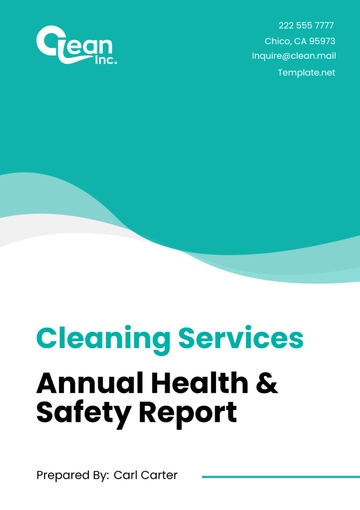Free Cleaning Services Air Quality Monitoring Report
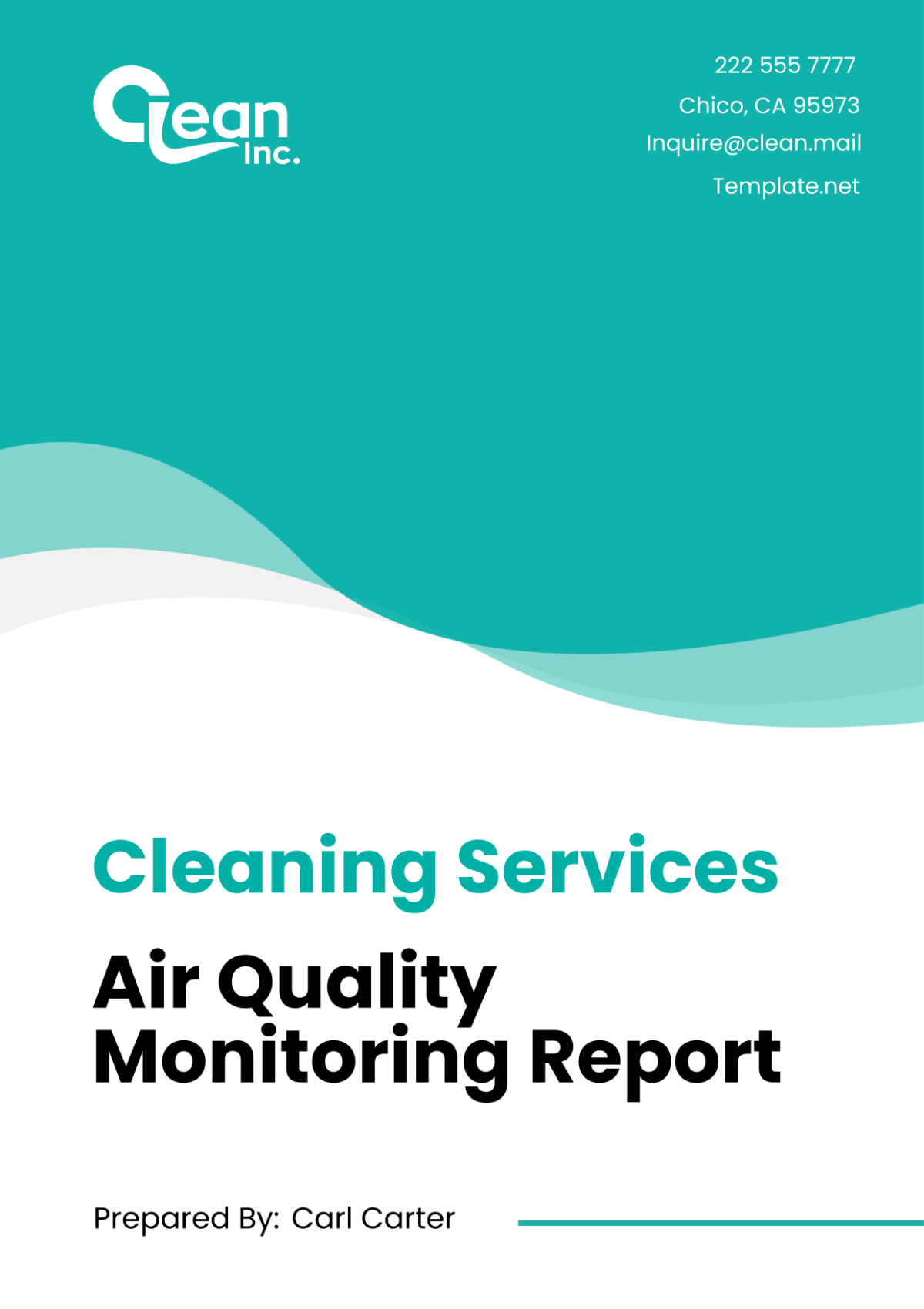
I. Executive Summary
This report provides a comprehensive analysis of the air quality within premises serviced by [Your Company Name], focusing on key pollutants and particulate matter that could impact the health and comfort of occupants. The data collected and analyzed from the monitoring period from [Month Day, Year] to [Month Day, Year] indicates the efficiency of the company's cleaning and air purification protocols in maintaining an optimal indoor air quality (IAQ) standard.
II. Air Quality Parameters Monitored
To ensure the highest standard of indoor air quality (IAQ), our monitoring efforts encompassed a comprehensive range of critical IAQ parameters. These included:
Particulate Matter (PM2.5 and PM10): These are fine particles that can penetrate deep into the respiratory system and cause a range of health problems, from minor irritations to serious diseases. PM2.5 refers to particles with a diameter of 2.5 micrometers or smaller, while PM10 includes particles with a diameter of 10 micrometers or smaller.
Volatile Organic Compounds (VOCs): Organic chemicals that have a high vapor pressure at room temperature. High levels of VOCs can lead to eye, nose, and throat irritations, headaches, and more severe health issues over long-term exposure.
Carbon Dioxide (CO2): While not directly harmful in lower concentrations, elevated levels of CO2 can indicate inadequate ventilation, contributing to a decrease in productivity and an increase in the likelihood of respiratory ailments.
Nitrogen Dioxide (NO2): A byproduct of combustion processes, NO2 can cause respiratory issues and exacerbate conditions such as asthma. Monitoring NO2 is essential in environments with gas stoves, heaters, or where vehicles are present.
Ozone (O3): While beneficial in the upper atmosphere, at ground level, ozone is a pollutant that can cause chest pain, coughing, throat irritation, and exacerbate lung diseases.
These parameters serve as the foundation for our IAQ assessments, enabling [Your Company Name] to tailor cleaning and air quality improvement strategies effectively.
III. Monitoring Data
The data below summarizes the monitoring data collected over a [three-month period], illustrating the effectiveness of our cleaning and air purification efforts in maintaining IAQ within the recommended Environmental Protection Agency (EPA) standards.
Parameter | EPA Standard |
|---|---|
PM2.5 (µg/m³) | ≤ 15 |
PM10 (µg/m³) | ≤ 50 |
NO2 (ppb) | ≤ 100 |
O3 (ppb) | ≤ 70 |
This detailed monitoring and the resulting data highlight [Your Company Name]'s commitment to not only adhering to regulatory standards but also to proactively safeguarding the health and well-being of our clients' environments. The downward trend in pollutants over the monitored period underscores the efficacy of our tailored cleaning protocols and state-of-the-art air purification technologies.
IV. Analysis
The meticulous data collected across a span from [Month Day, Year] to [Month Day, Year] presents a clear narrative of progressive improvement in indoor air quality (IAQ) parameters. This is evident across all critical pollutants, with measurements consistently remaining below the thresholds established by the Environmental Protection Agency (EPA) for safe indoor environments. This section delves into the significance of these findings and their implications for the effectiveness of [Your Company Name]'s comprehensive cleaning and air quality management strategies.
A. Particulate Matter and VOC Reduction
The observed decrease in levels of Particulate Matter (PM2.5 and PM10) and Volatile Organic Compounds (VOCs) is particularly noteworthy. PM2.5 and PM10 are among the most hazardous air pollutants due to their ability to penetrate deep into the respiratory tract, posing significant health risks. The recorded downtrend in these particulates is a testament to the high efficiency of [Your Company Name]'s air filtration and dust suppression methodologies. Similarly, the reduction in VOC levels, which are known for their adverse effects on indoor air quality, highlights the effectiveness of using low-emission cleaning products and practices. These achievements underscore [Your Company Name]'s commitment to mitigating air quality risks and ensuring a healthier indoor environment.
B. Carbon Dioxide Levels
The data indicating a gradual decrease in Carbon Dioxide (CO2) concentrations over the monitoring period suggests that [Your Company Name] employs effective ventilation practices. Proper ventilation is crucial for diluting and removing indoor pollutants, including excess CO2, which can accumulate in poorly ventilated spaces, leading to diminished air quality and occupant discomfort. The observed CO2 levels reflect a well-balanced indoor atmosphere, further contributing to occupant well-being and productivity.
C. Nitrogen Dioxide and Ozone Levels
Furthermore, the decline in Nitrogen Dioxide (NO2) and Ozone (O3) concentrations over the three months is indicative of the positive environmental impact of [Your Company Name]'s green cleaning initiatives. NO2 and O3 are pollutants primarily introduced into indoor environments through external sources and the use of certain cleaning agents. The reduction of these pollutants highlights the efficacy of [Your Company Name]'s selection of environmentally friendly cleaning solutions and techniques, which not only contribute to superior air quality but also align with broader environmental sustainability goals.
The analysis of air quality monitoring data illustrates a significant and consistent improvement in indoor air quality across all monitored parameters. This improvement is a direct result of [Your Company Name]'s dedication to implementing advanced cleaning, air filtration, and ventilation practices, alongside a commitment to using environmentally sustainable cleaning agents.
V. Recommendations
While the data collected demonstrates significant achievements in maintaining and improving indoor air quality within the premises serviced by [Your Company Name], continuous improvement is pivotal to ensuring these environments remain conducive to health and productivity. The following recommendations are proposed to further enhance IAQ and sustainability practices:
A. Enhanced Monitoring Techniques
Implement Real-Time Air Quality Monitoring: Deploy IoT-enabled sensors to provide continuous, real-time data on IAQ parameters. This technology enables proactive adjustments to cleaning and ventilation practices, ensuring immediate responses to any deterioration in air quality.
Expand Monitoring Parameters: Consider adding additional pollutants to the monitoring regime, such as formaldehyde and other specific VOCs that may be relevant to the unique environments of certain clients, enhancing the comprehensiveness of the IAQ assessment.
B. Advanced Cleaning and Ventilation Strategies
Adopt Next-Generation Filtration Technologies: Explore the integration of HEPA filters and activated carbon filters in HVAC systems to further reduce particulate matter and VOC levels in indoor environments.
Optimize Ventilation Based on Occupancy: Utilize smart ventilation systems that adjust airflow based on real-time occupancy data, ensuring optimal air exchange rates without unnecessary energy consumption.
Sustainable Practices and Innovations
Green Cleaning Products: Continue to research and adopt the latest in environmentally friendly cleaning agents that are effective yet minimize potential IAQ impact.
Employee Training and Engagement: Enhance training programs for staff to include the latest best practices in green cleaning and IAQ management. Engage employees in sustainability initiatives to foster a culture of environmental responsibility.
C. Fostering Client and Community Engagement
Educational Outreach: Develop and provide clients with resources and workshops on the importance of IAQ and the role they can play in maintaining a healthy indoor environment.
Community Initiatives: Participate in or sponsor local and national efforts to promote environmental sustainability and public health, positioning [Your Company Name] as a leader in corporate responsibility.
The air quality monitoring report reflects [Your Company Name]'s steadfast dedication to the health and well-being of the environments under its care. By embracing these recommendations and continuing to innovate, [Your Company Name] will not only enhance its service offerings but also contribute positively to environmental stewardship and public health.
VI. Conclusion
[Your Company Name] has successfully maintained air quality within safe and healthy levels, surpassing the standards set by the EPA. The continuous monitoring and adjustment of cleaning protocols have proven effective in reducing airborne contaminants and ensuring a healthy indoor environment. [Your Company Name] is committed to upholding the highest standards of indoor air quality, reflecting our dedication to the well-being of our clients and their occupants.
- 100% Customizable, free editor
- Access 1 Million+ Templates, photo’s & graphics
- Download or share as a template
- Click and replace photos, graphics, text, backgrounds
- Resize, crop, AI write & more
- Access advanced editor
Prioritize health and wellness with the Cleaning Services Air Quality Monitoring Report Template from Template.net. Designed for precision and adaptability, this report template is editable and customizable to suit your specific monitoring needs. With the ease of editing in our Ai Editor Tool, you can accurately track and report air quality, ensuring a healthy environment for both employees and clients.
You may also like
- Sales Report
- Daily Report
- Project Report
- Business Report
- Weekly Report
- Incident Report
- Annual Report
- Report Layout
- Report Design
- Progress Report
- Marketing Report
- Company Report
- Monthly Report
- Audit Report
- Status Report
- School Report
- Reports Hr
- Management Report
- Project Status Report
- Handover Report
- Health And Safety Report
- Restaurant Report
- Construction Report
- Research Report
- Evaluation Report
- Investigation Report
- Employee Report
- Advertising Report
- Weekly Status Report
- Project Management Report
- Finance Report
- Service Report
- Technical Report
- Meeting Report
- Quarterly Report
- Inspection Report
- Medical Report
- Test Report
- Summary Report
- Inventory Report
- Valuation Report
- Operations Report
- Payroll Report
- Training Report
- Job Report
- Case Report
- Performance Report
- Board Report
- Internal Audit Report
- Student Report
- Monthly Management Report
- Small Business Report
- Accident Report
- Call Center Report
- Activity Report
- IT and Software Report
- Internship Report
- Visit Report
- Product Report
- Book Report
- Property Report
- Recruitment Report
- University Report
- Event Report
- SEO Report
- Conference Report
- Narrative Report
- Nursing Home Report
- Preschool Report
- Call Report
- Customer Report
- Employee Incident Report
- Accomplishment Report
- Social Media Report
- Work From Home Report
- Security Report
- Damage Report
- Quality Report
- Internal Report
- Nurse Report
- Real Estate Report
- Hotel Report
- Equipment Report
- Credit Report
- Field Report
- Non Profit Report
- Maintenance Report
- News Report
- Survey Report
- Executive Report
- Law Firm Report
- Advertising Agency Report
- Interior Design Report
- Travel Agency Report
- Stock Report
- Salon Report
- Bug Report
- Workplace Report
- Action Report
- Investor Report
- Cleaning Services Report
- Consulting Report
- Freelancer Report
- Site Visit Report
- Trip Report
- Classroom Observation Report
- Vehicle Report
- Final Report
- Software Report
